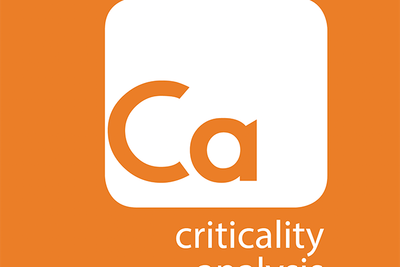Introduction to Criticality Analysis [CA]
Criticality analysis is a key element is the Reliability Engineering for Maintenance Domain of the Uptime Elements Reliability Framework and Asset Management System.
Uptime Elements is a language as much as anything else so let’s begin our journey to mastery with criticality analysis through understanding of the key words:
According to the Uptime Elements Dictionary:
Criticality: A measure of the importance of an asset relative to other assets; A relative ranking of assets based on the probability of its failure and consequences of the failure.
Criticality Analysis (CA): A methodology used to evaluate how asset failures impact organizational performance in order to systematically rank plant/facility assets for the purpose of selecting candidates for reliability strategy development [RSD], work prioritization [PS], preventive maintenance (PM], asset condition monitoring and management [ACM/ACI] and optimization, material classification [MRO], capital improvement [CP].
Two Views for Criticality
This process has defined two levels of criticality decisions: system and component failure mode. This provides a detailed road map for where the maintenance resource can be effectively applied – no more guessing at it!
Component criticality – what components if functionally failed create a safety, environmental, production or repair/replace cost basis (which systems might eat if your lunch if you are not aware and have not planned an appropriate intervention or decision)
Use rigorous FMEA process with SME review, Reliability Threshold Investigation and Sanity review for developing a reliability strategy for safe, sustainable functional assurance
System criticality – what asset/systems are the most critical (80/20) on a business/mission basis (which systems are eating your lunch in reality).
Criticality Analysis is a technical methodology. The Criticality analysis outcomes provides the most value when successfully connected through line of sight to the Asset Management and Risk Policy, Strategy and Plan. It also creates opportunities in algorithmic machine learning formulas and notification systems. It can inform decision making for digitalization strategy such as source, connect, collect, analyze and do as expressed in Uptime Elements Digitalization Strategy Framework.
It provides the basis for determining the value and impact a specific asset has on the production or operations process, as well as the level of attention the asset requires with regard to reliability strategy development [RSD] for the Operations and Maintenance phases or strategies and plans [SP] for asset management.
A failure modes and effects analysis [FMEA], one of the tools in Reliability Strategy Development, is used to determine the different failure modes and their effects on the the asset .
A Criticality Analysis classifies and prioritizes the level of importance of a failure, usually through safety, environmental, operational and cost consequences. Other consequence categories may be added that are equally important to your organization.
The ranking is based on several factors, such as the projected failure rate of the asset, the severity of the effect (i.e. consequences) of the failure and the likelihood of the failure being detected before it occurs.
Asset Criticality is sometimes called Asset Risk Profile. It uses a formula to determine the financial impact if the asset failure were to happen. Simply stated, it is a risk rating indicator, with asset criticality directly proportional to:
(Failure Frequency / Period) X (Cost Consequences ($)) = Risk ($/ Period)
The cost consequence is not just the cost of lost production and the cost of the repair, but also includes cost related to safety, the environment, quality, the organization’s reputation, etc.
The cost consequence is the total business impact of that asset’s failure. The failure frequency is an estimated number, a probability based on history or industry norm for similar situation and updated as new asset knowledge [AK] is developed.
Criticality analysis is an important tool that provides valuable information for decisions making [DM].
This article is based on the CA or Criticality Analysis Passport, in the Certified Reliability Leader Body of Knowledge based on Uptime Elements Reliability Framework and Asset Management System.
A series of live, instructor led online workshops from one-hour, one-day and three-days are offered on a. Regular schedule and posted in the Reliabilityweb.com events calendar.
We highly recommend Criticality Analysis by Tacoma Zach as a detailed “how to” guide.
ISO 14424 offers a good approach to criticality analysis
- Reliabilityweb A Risk Threshold Investigation Is Born ›
- Reliabilityweb Priority vs Criticality ›
- Reliabilityweb Asset Criticality Ranking: Value for Each ... ›
- Reliabilityweb Risk-Based Asset Criticality Assessment Handbook ›
- Reliabilityweb Risk & Criticality: Understanding Potential Failure ›
- Reliabilityweb Criticality Analysis Made Simple ›
- Reliabilityweb Understanding Criticality: Myths and Pitfalls to Avoid ›
- Reliabilityweb Asset Criticality Analysis - Real Use and Application-by Timothy Taber and Chad Thompson ›
- Reliabilityweb Asset Failure Consequences and Risks ›
- Reliabilityweb Understanding Criticality: Myths and Pitfalls to Avoid ›
